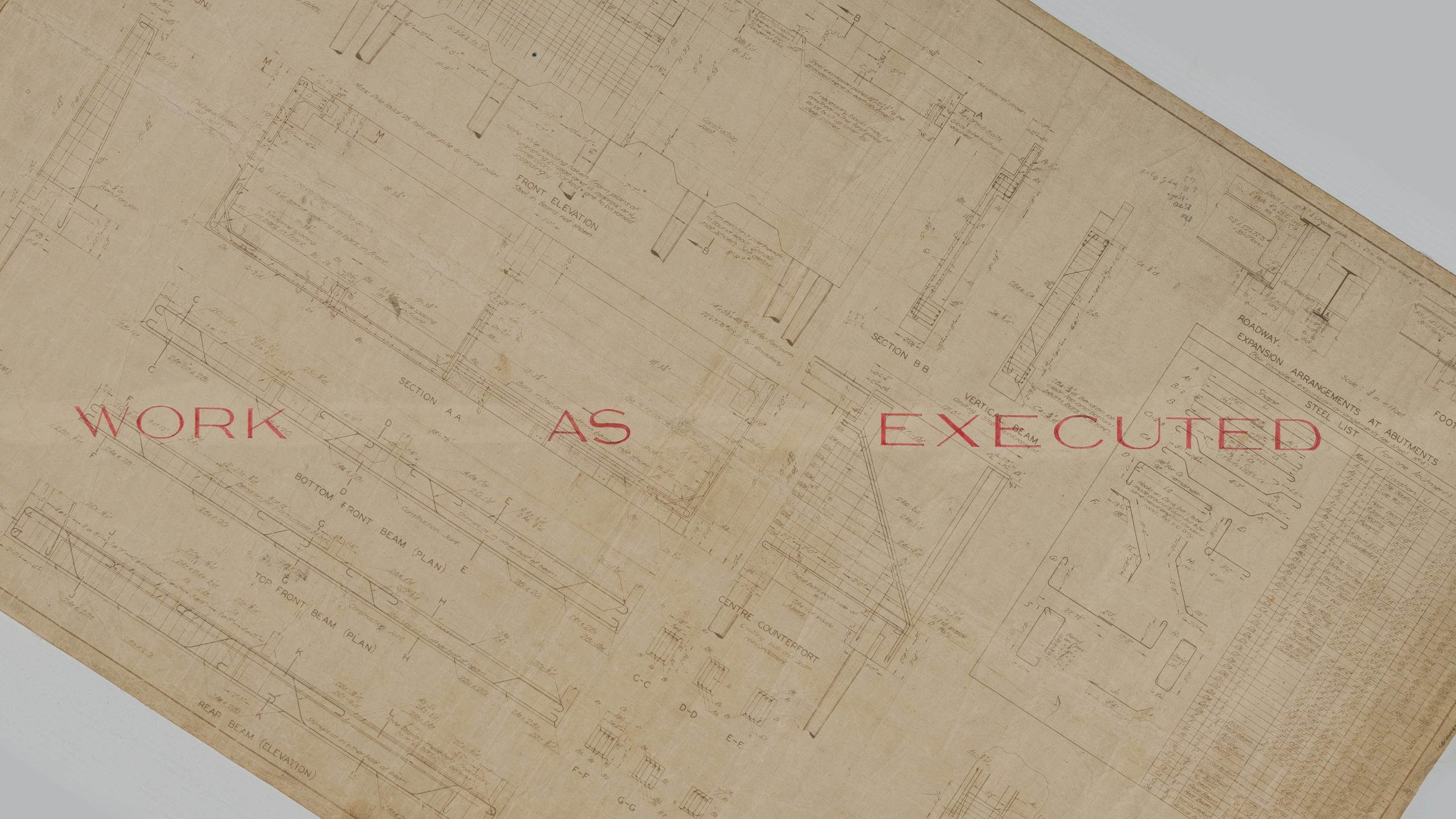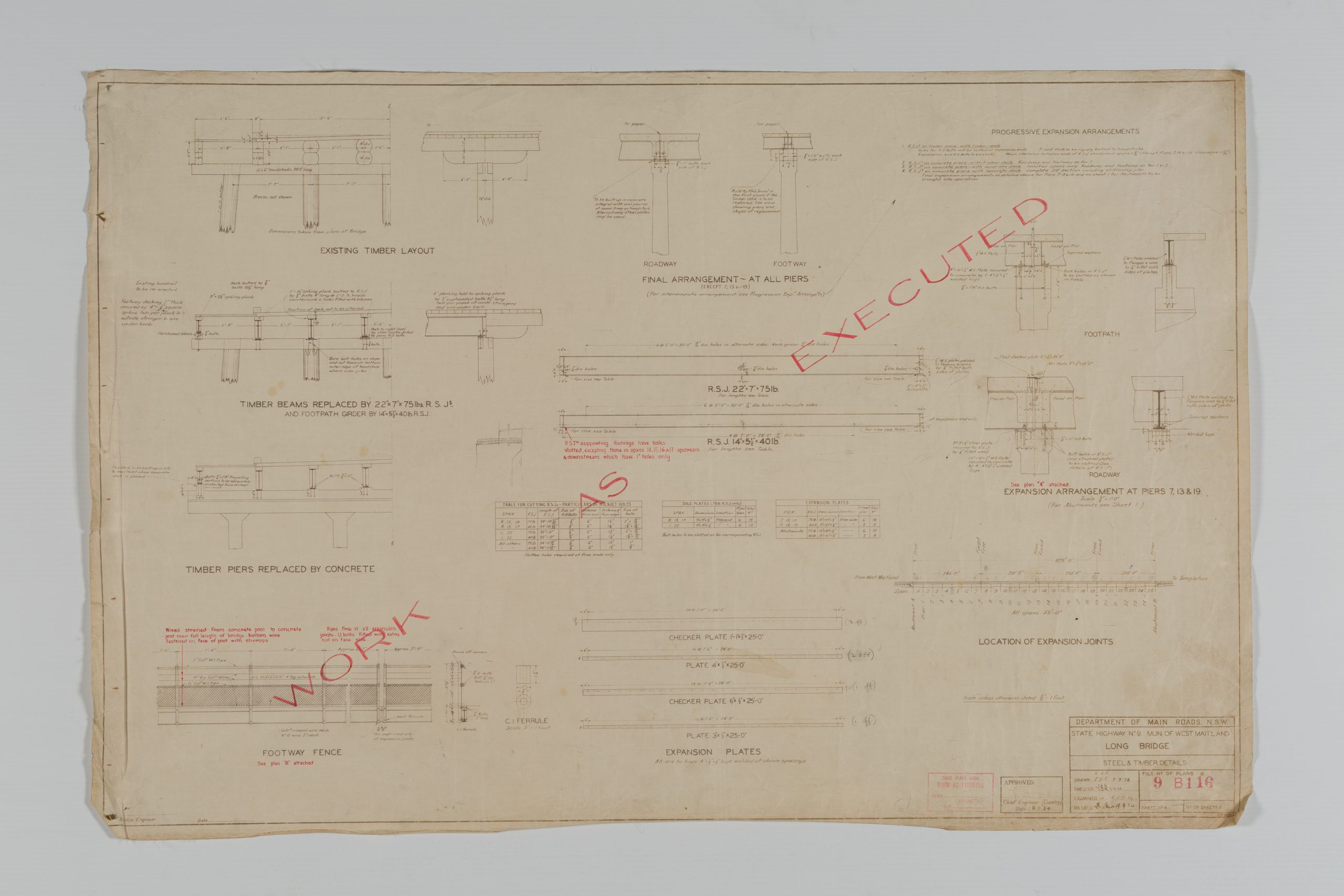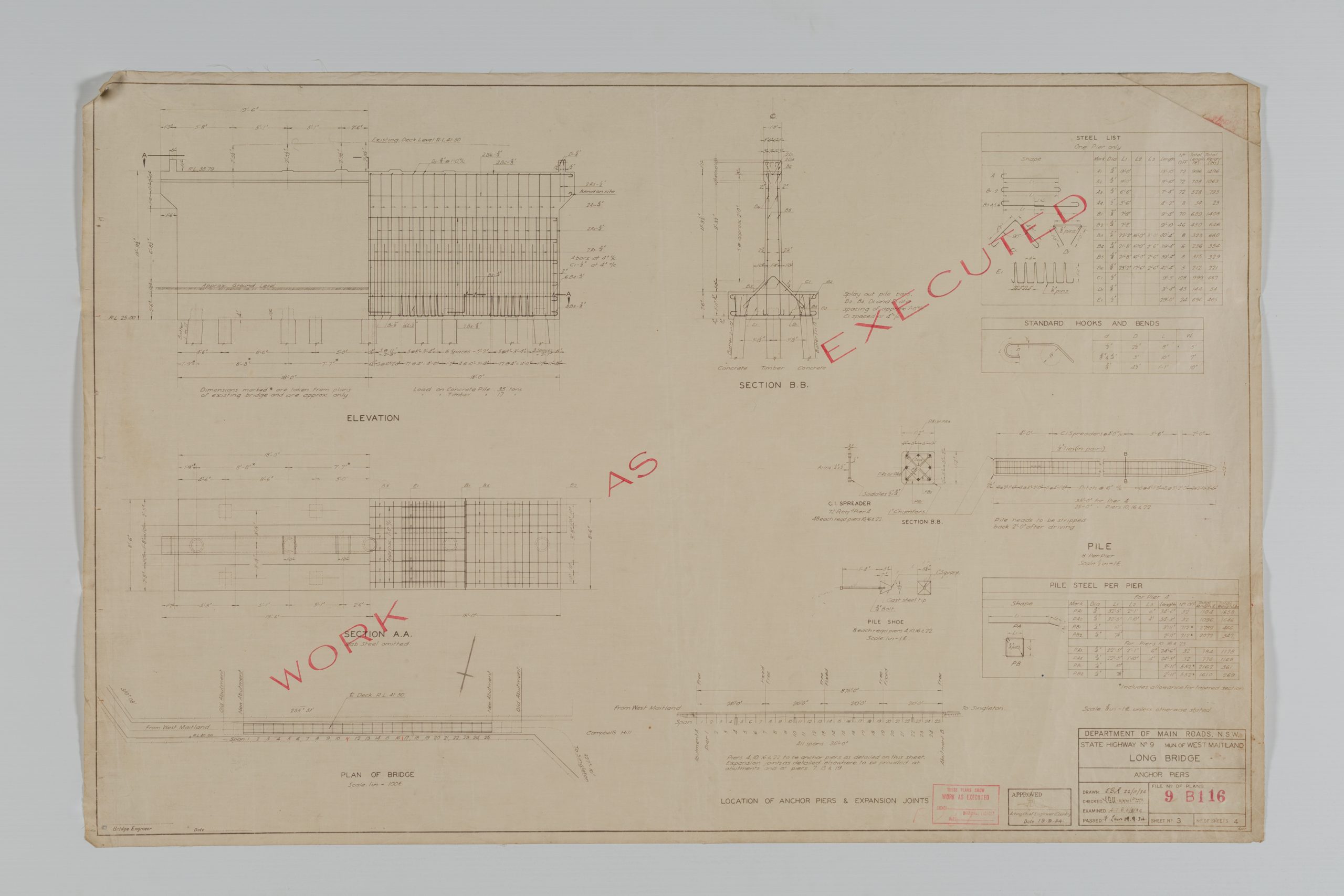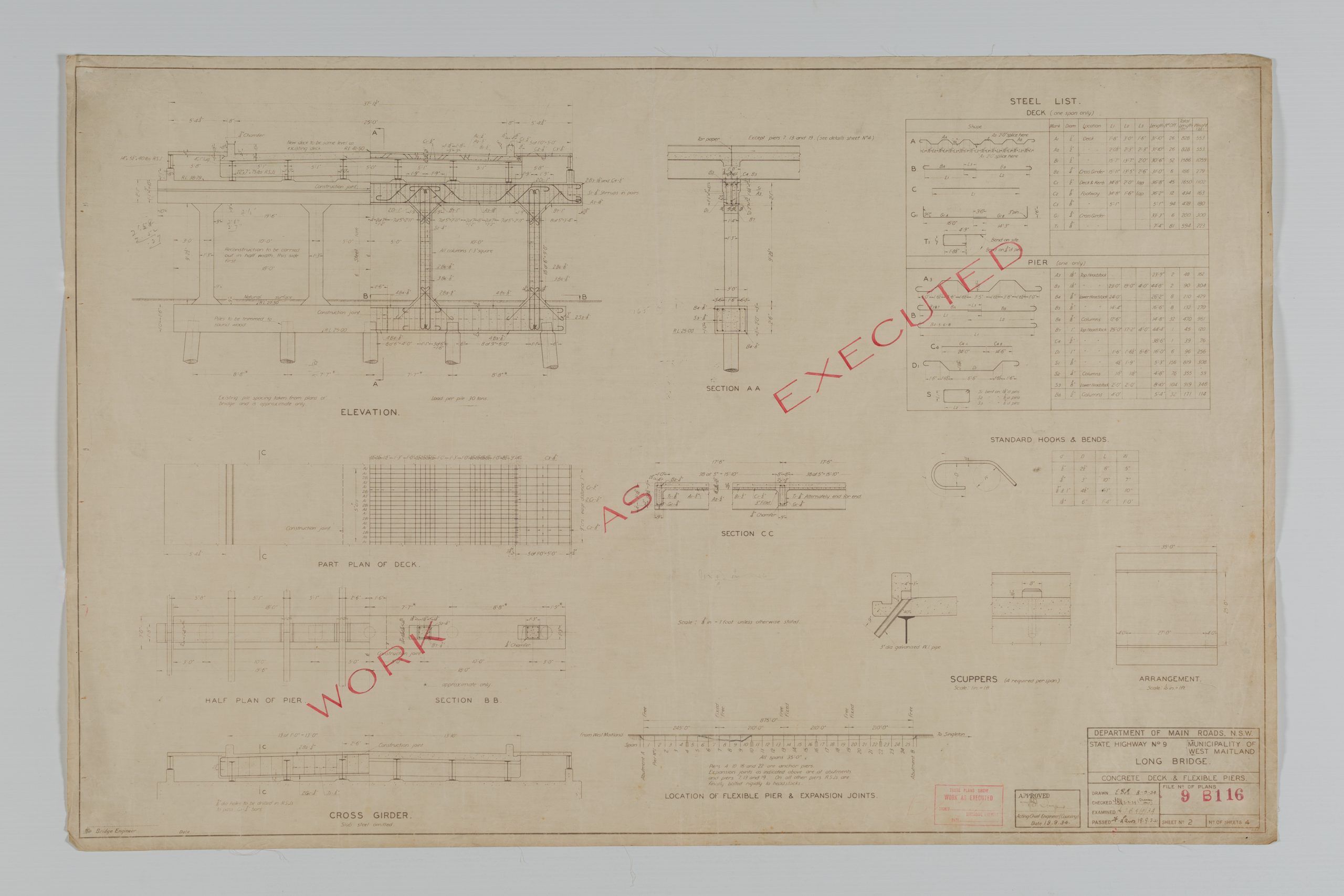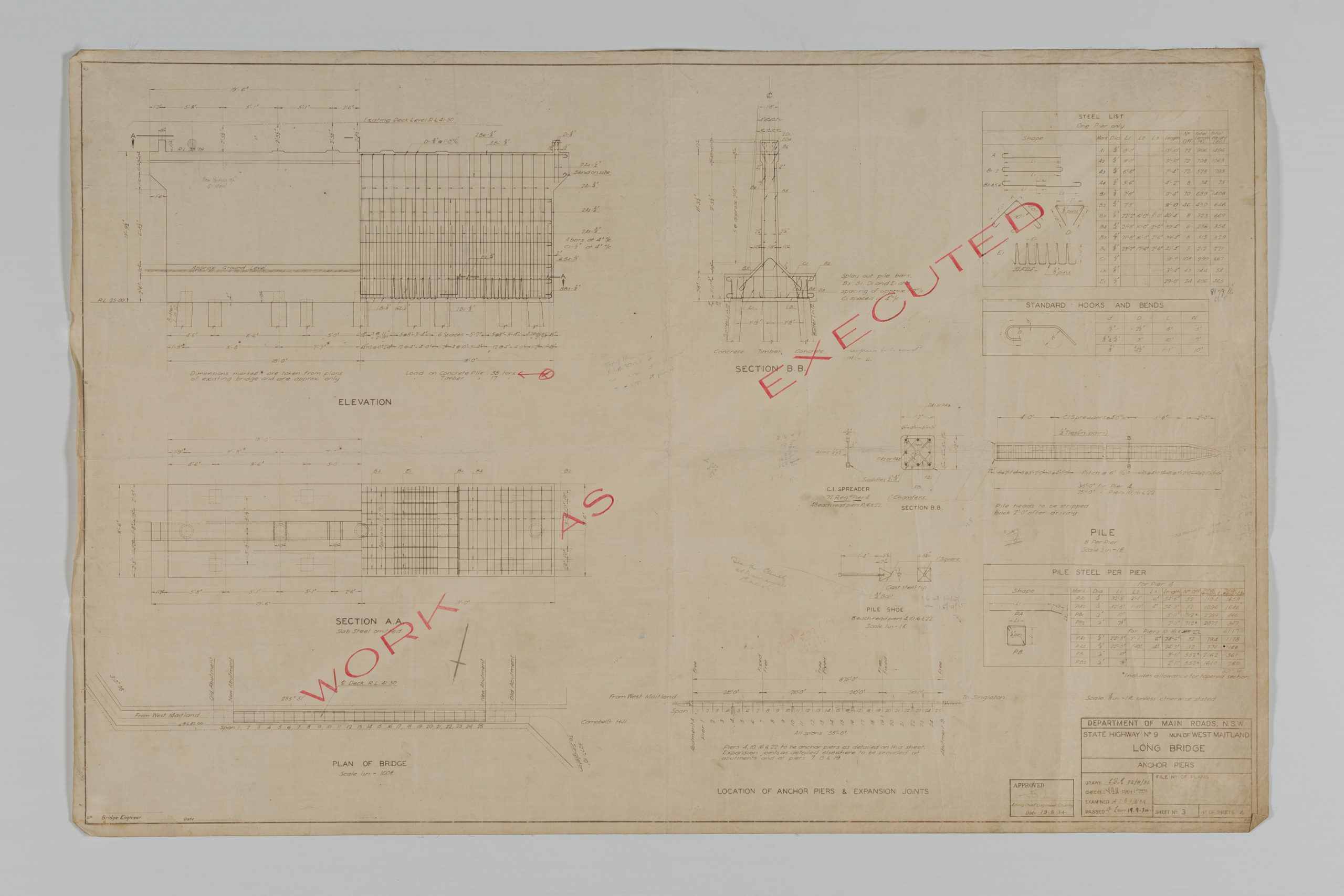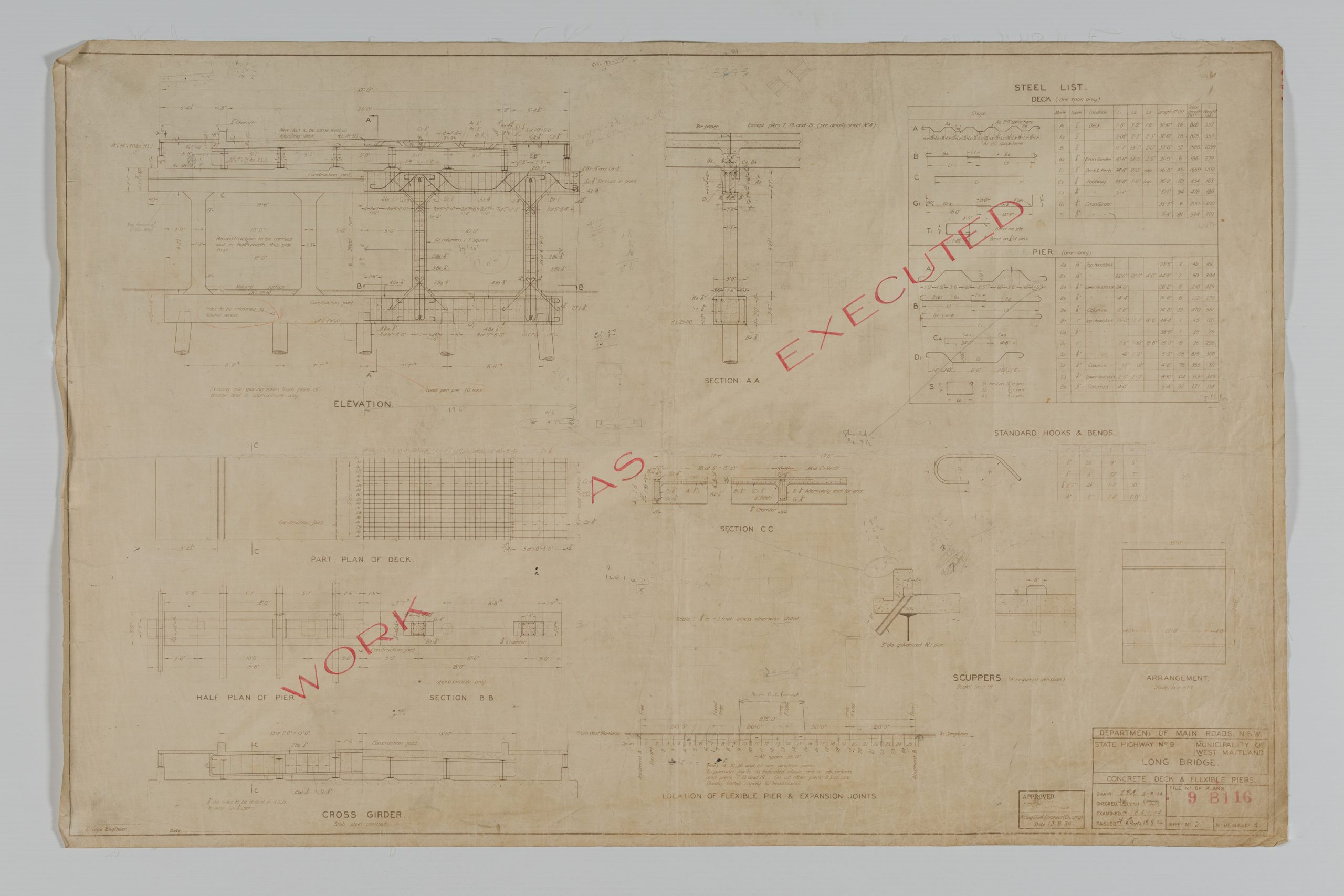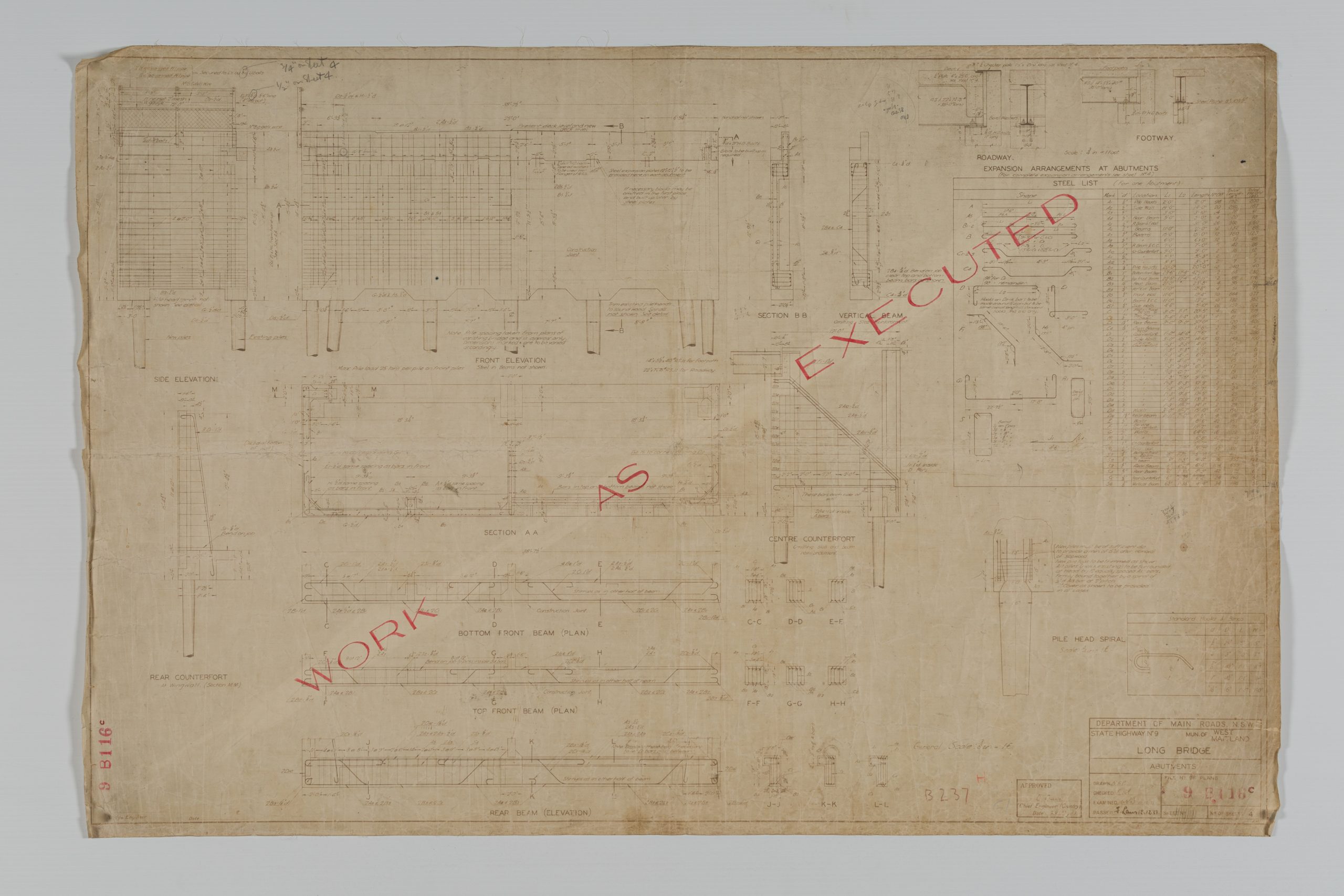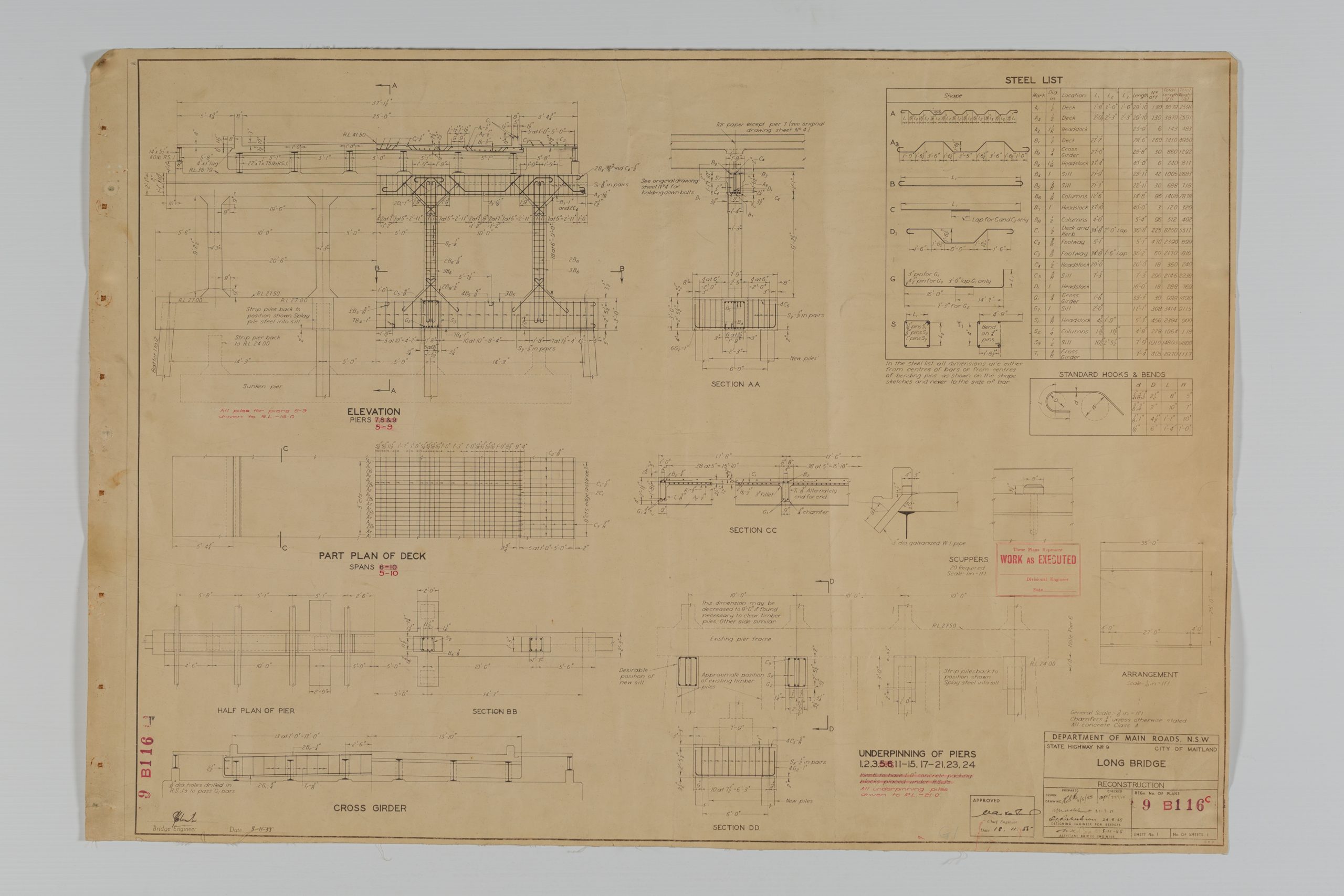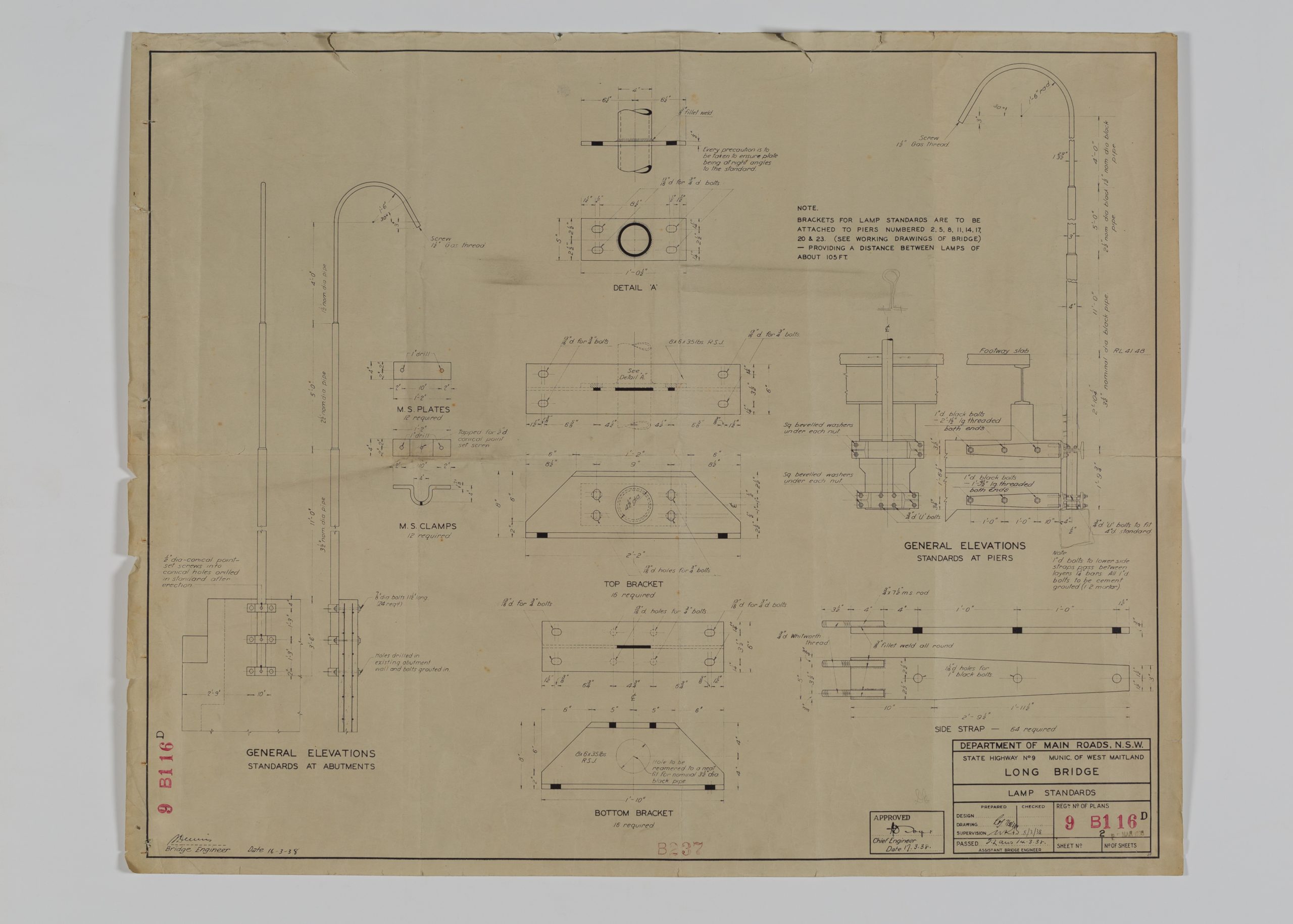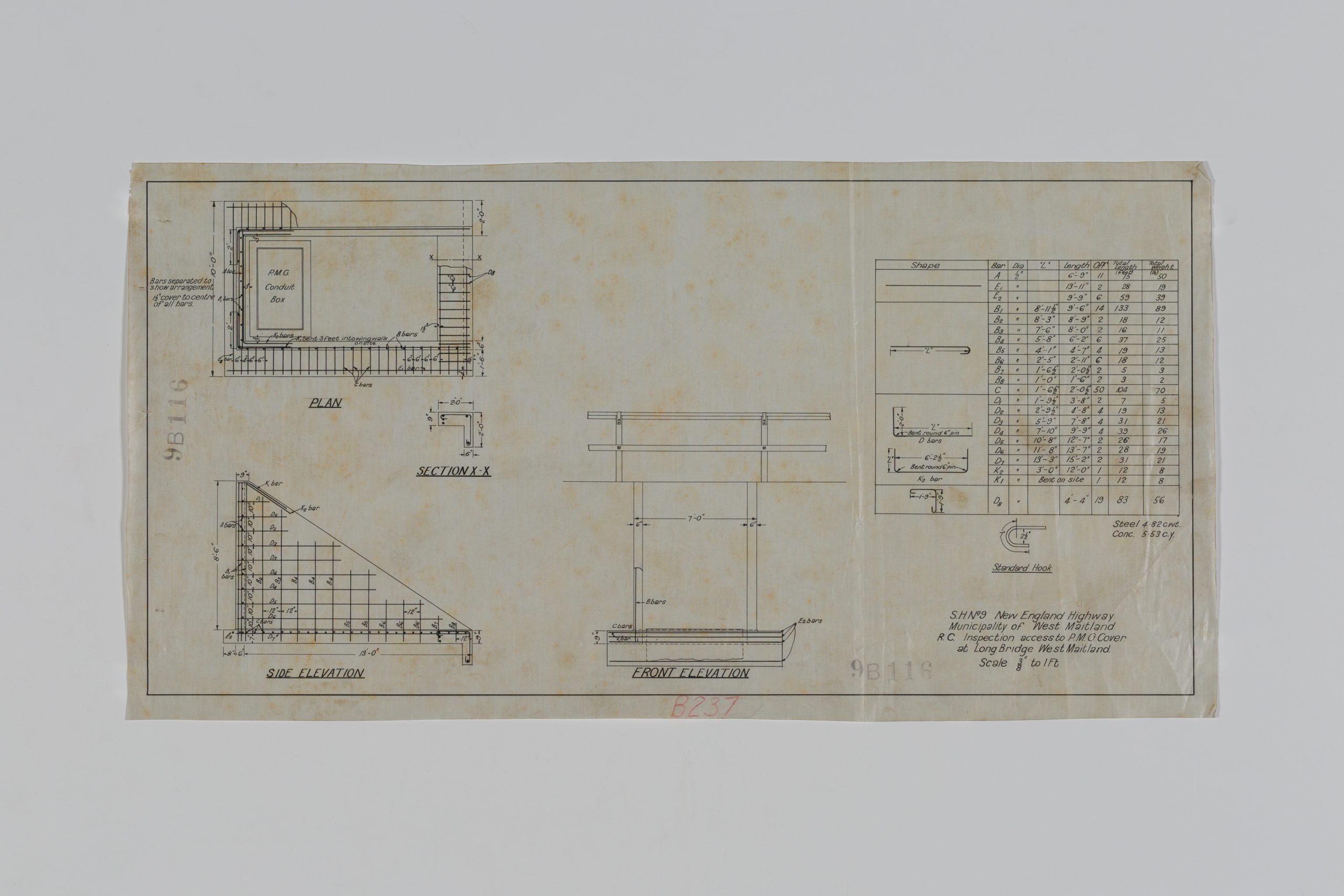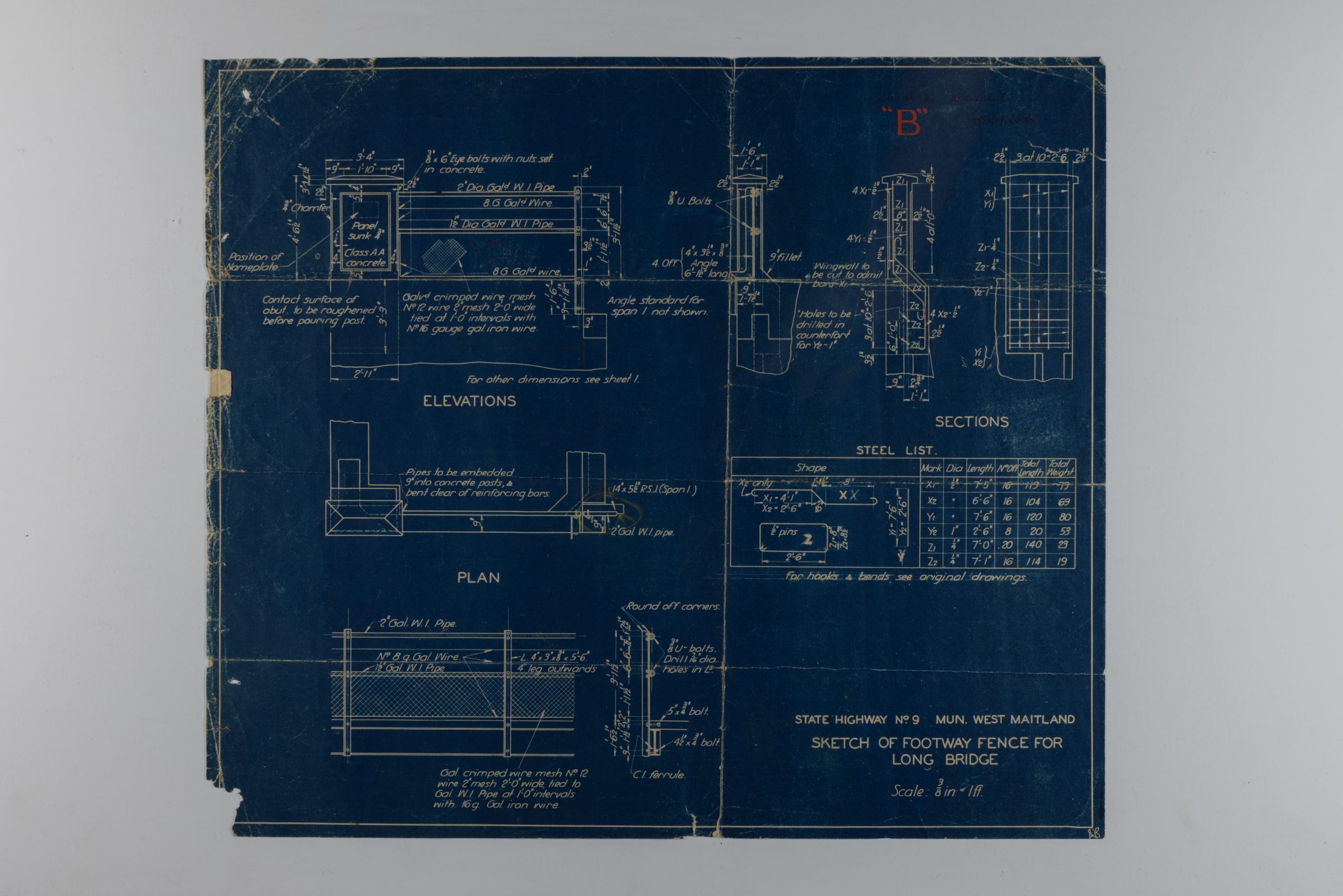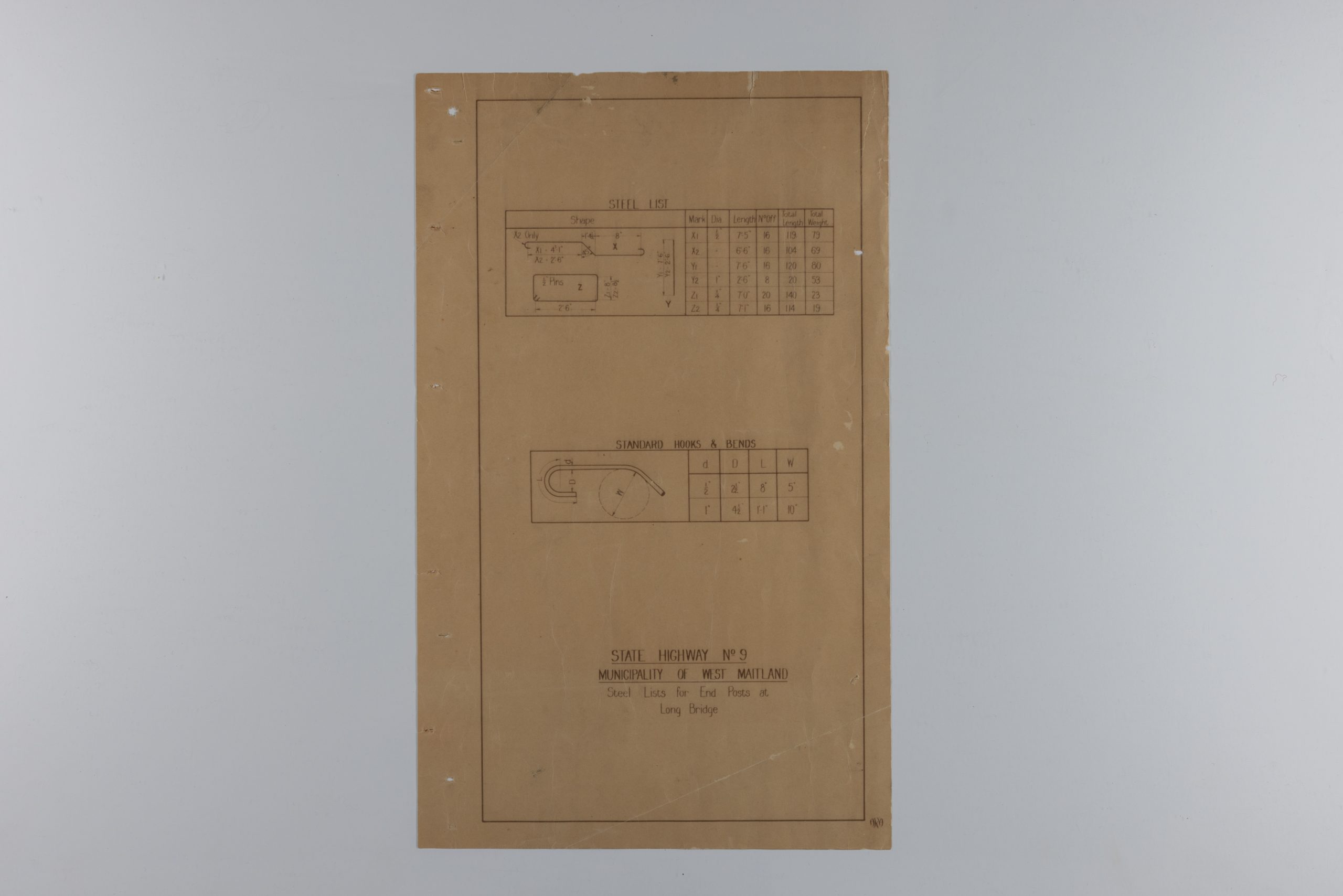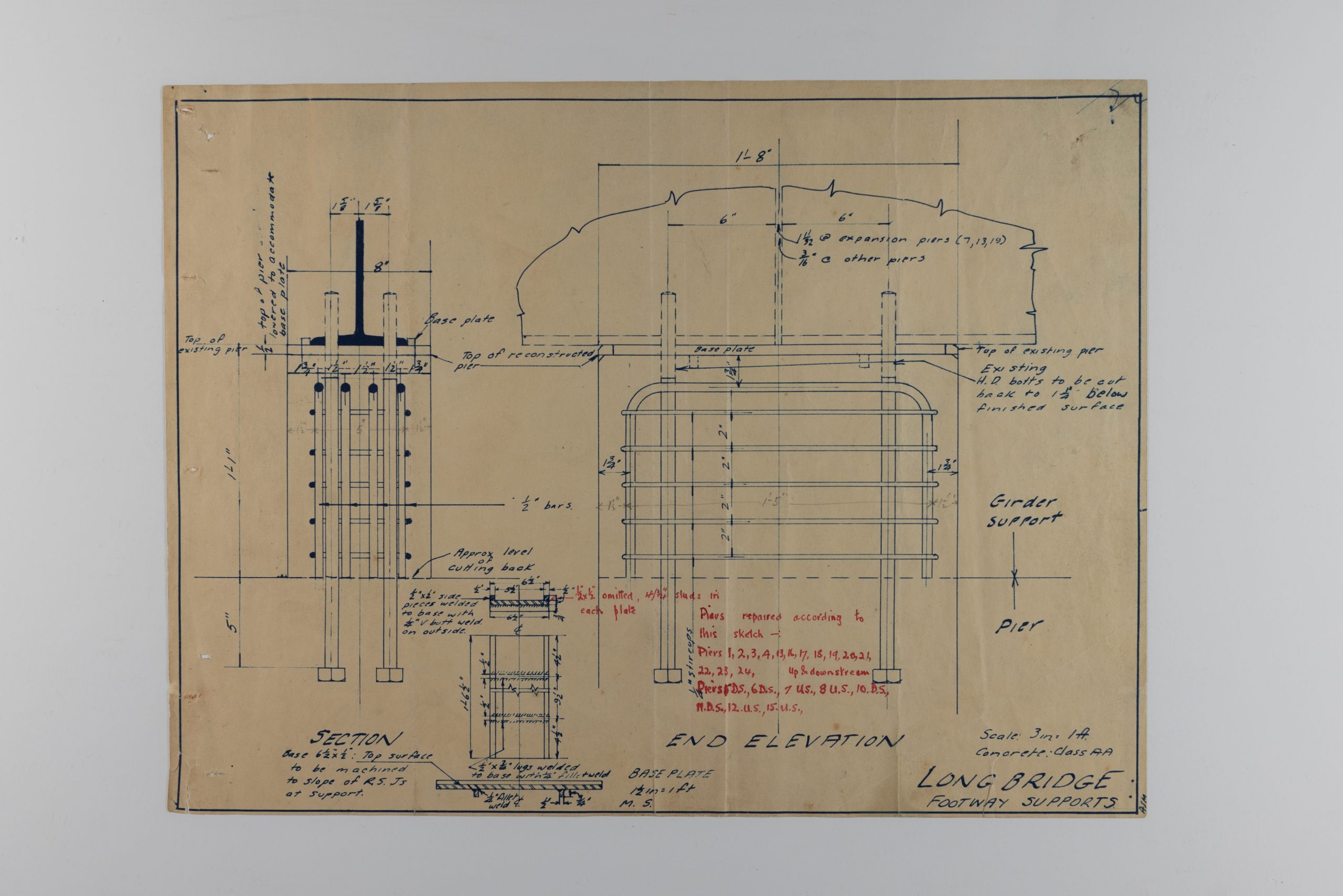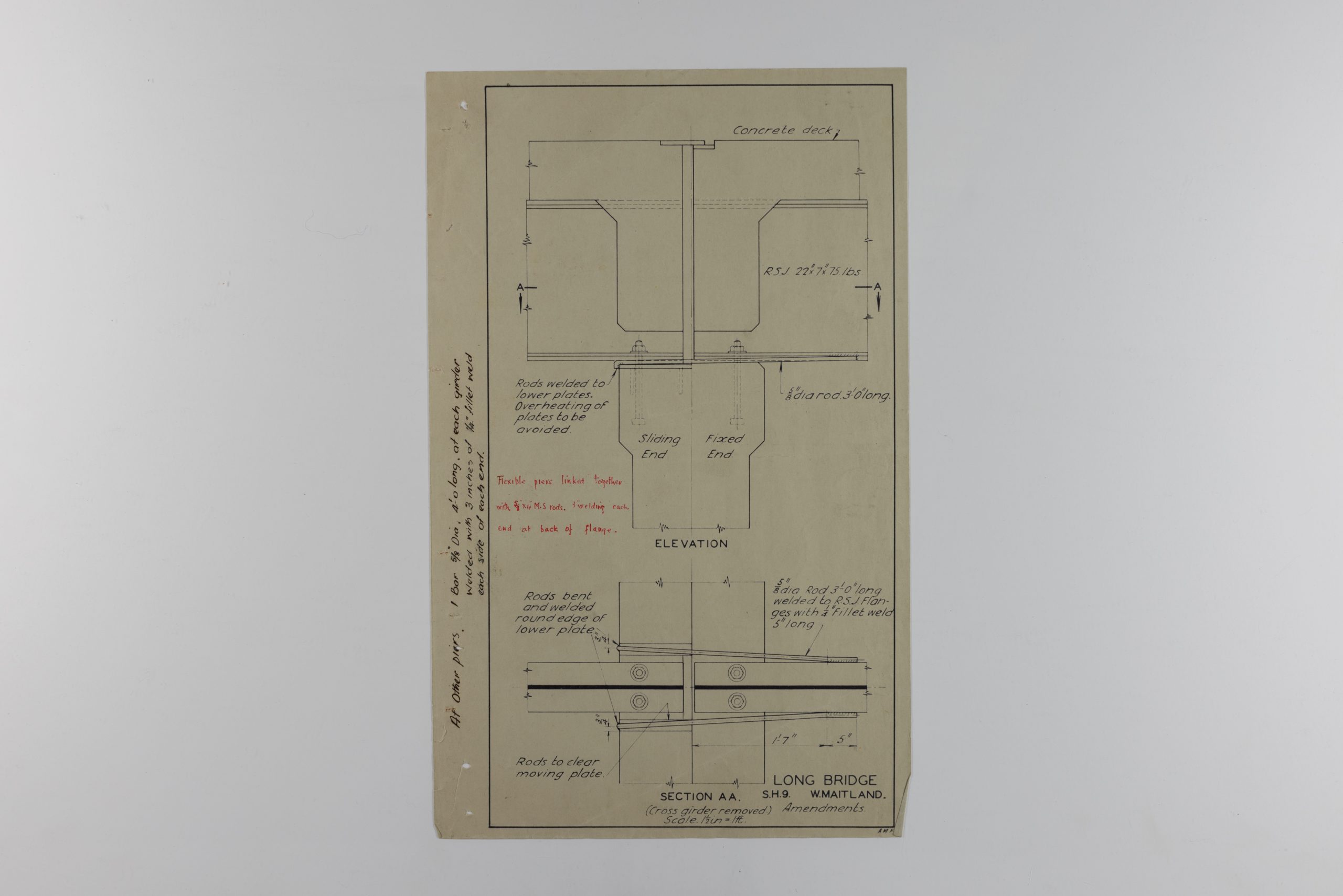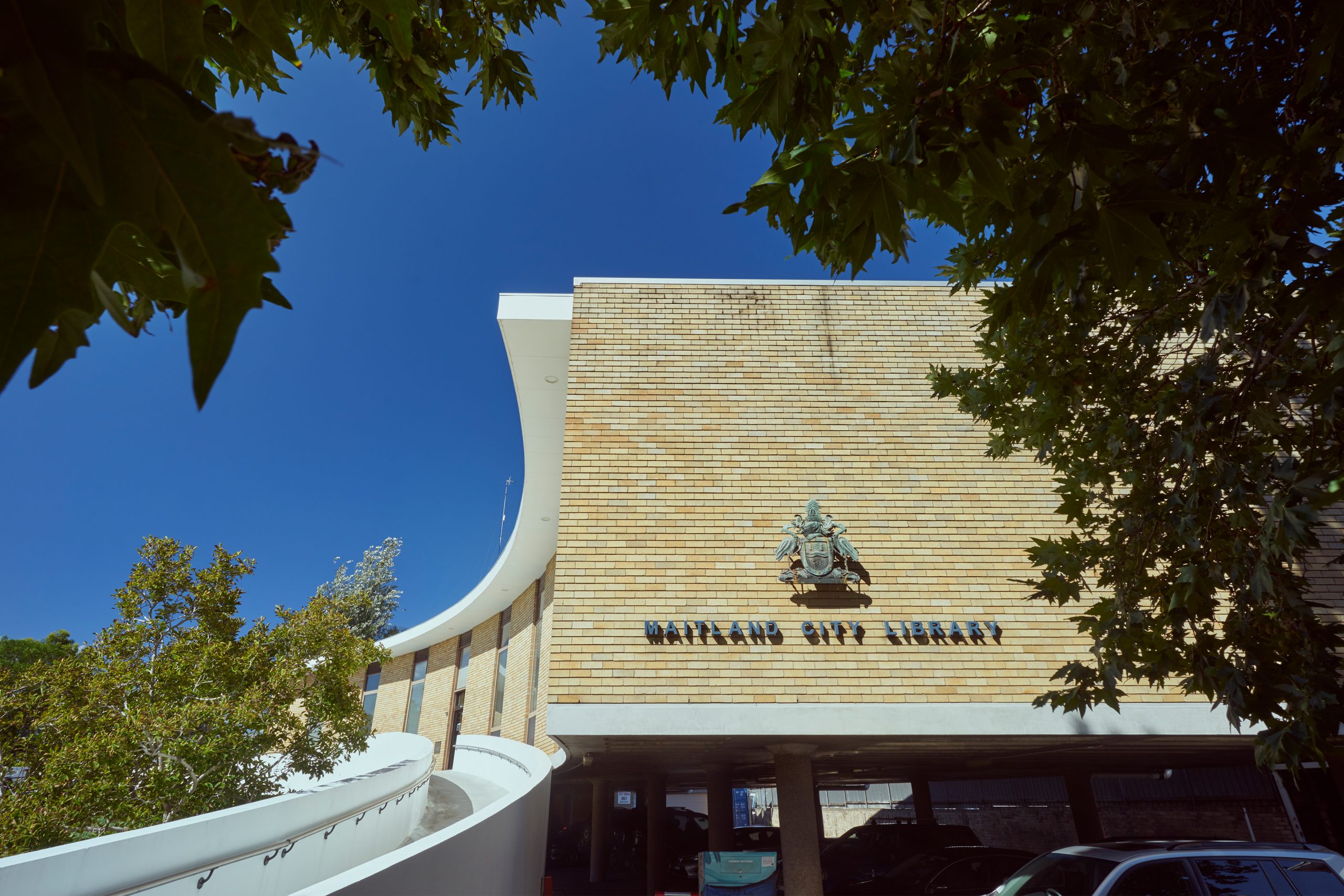Over Troubled Water
Plans for Building and Repairing Maitland’s Long Bridge
What does it take to make a bridge safe and sturdy? Perhaps it’s usually just good design and sound engineering. But in the case of Long Bridge in Maitland, where catastrophic floods are common, it has taken construction, reconstruction and rebuilding five times over the past 200 years. These 16 plans prepared by the NSW Department of Main Roads, spanning the 1930s to 1950s, reflect the construction and repair work done to build and make the fourth bridge secure. Or best possible attempts, anyway.
Situated on the banks of the Hunter River / Coquun, Maitland has always been prone to flooding. As early as 1825, a short timber bridge was built at the boggy base of Campbell’s Hill. This was replaced in 1838 with a new timber bridge built by convicts, but when the Hunter’s water rose and inundated the floodplains, the bridge was usually submerged and floating debris damaged the structure. Floodwaters of 1893 swept away one end of the bridge, so another bridge was then constructed to replace it. Made from ironbark, it was considered one of the finest bridges in the colony, and very solid.
But by mid-1935, it too needed replacing. The earliest plans in this collection were drawn up to construct a new concrete bridge, which commenced in July 1935 and opened in 1938. But in 1955, another powerful flood struck the region, and the very modern and impressive concrete bridge was severely damaged by the debris of several houses that had been swept through the raging waters.
One of the plans tells us what the NSW Department of Main Roads did next – bridge reconstruction, including underpinning of its concrete piers and the addition of 20 scuppers, as used on boats for draining water. But despite this work to shore it up, it seems that the bridge had to be replaced anyway. A new concrete and steel model was finished by 1956. So far, it is strong and still standing.


